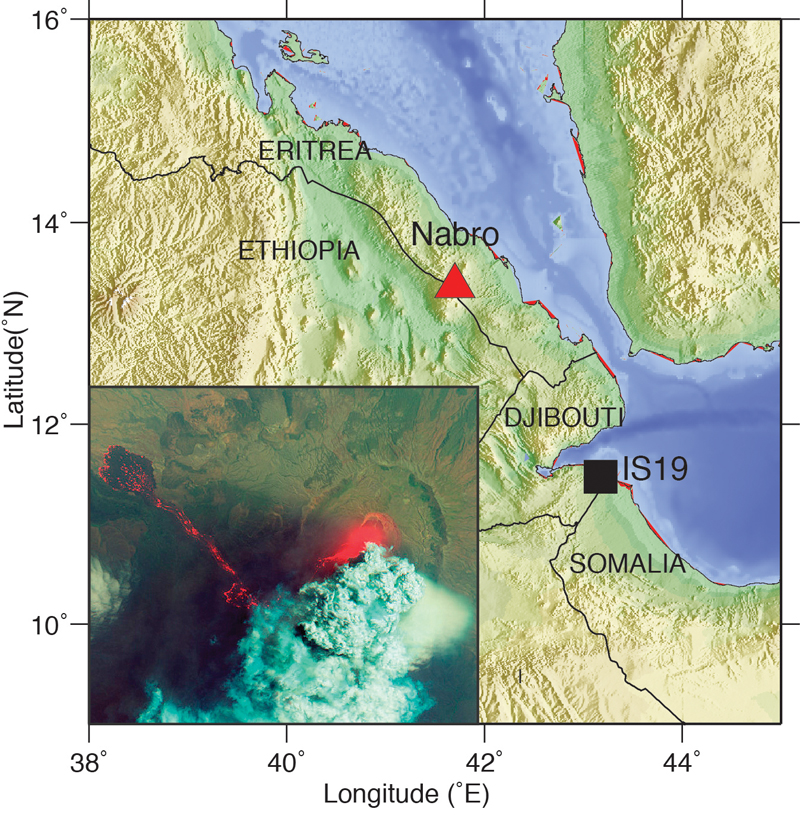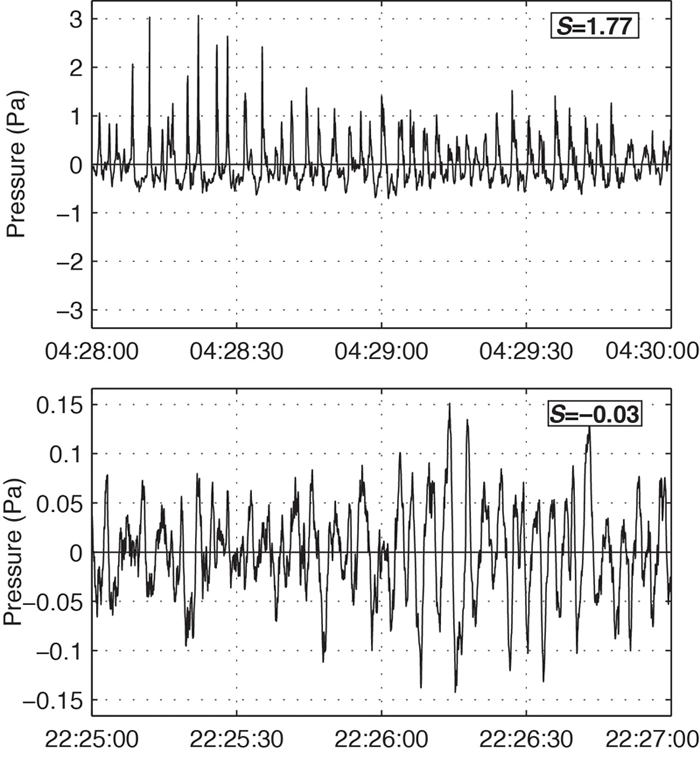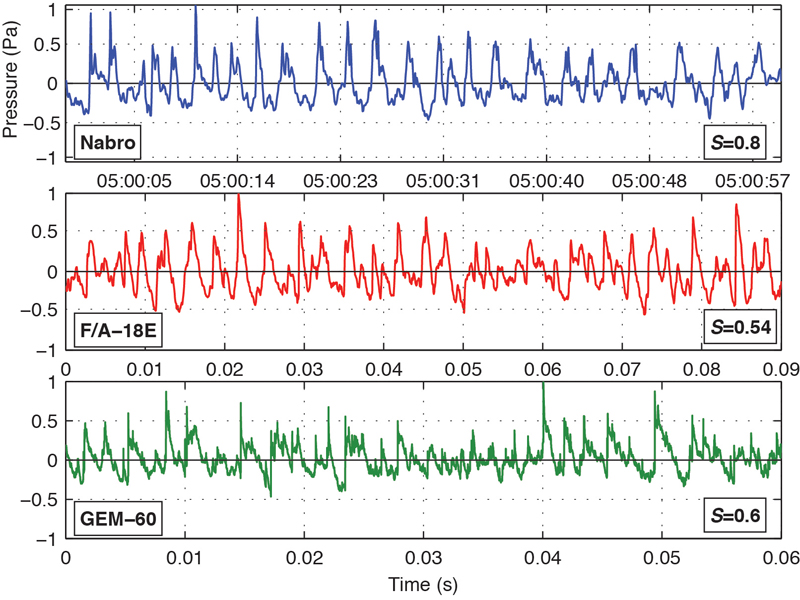
David Fee – dfee@gi.alaska.edu
Wilson Infrasound Observatories
Alaska Volcano Observatory
Geophysical Institute
University of Alaska Fairbanks
Fairbanks, AK 99775
Robin S. Matoza – rmatoza@ucsd.edu
Institute of Geophysics and Planetary Physics
Scripps Institution of Oceanography
La Jolla, CA
Kent L. Gee – kentgee@ byu.edu
Department of Physics and Astronomy
Brigham Young University
Provo, Utah, USA
Tracianne B. Neilsen – tbnbyu@gmail.com
Department of Physics and Astronomy
Brigham Young University
Provo, Utah, USA
Darcy E. Ogden – dogden@ucsd.edu
Institute of Geophysics and Planetary Physics
Scripps Institution of Oceanography
La Jolla, CA
Popular version of paper 3aPAa4
Presented Wednesday morning, December 4, 2013
166th ASA Meeting, San Francisco
Infrasound, or sound waves below the low-frequency threshold of human hearing, is an increasingly important geophysical technique for studying natural phenomena such as volcanoes, hurricanes, and meteors (e.g., the 2013 Russia meteor), in addition to its current use in monitoring for nuclear weapons testing. Recent infrasound research (e.g. Matoza et al., 2009) has found similarities between man-made jet engines and the infrasound produced by large volcanic eruptions.

Fig. #1: Map of Nabro Volcano (red triangle) and the nearest infrasound sensors that recorded the eruption (IS19, black square). Inset image is an EO-1 ALI satellite image of the Nabro eruption on 27 June 2011. Credit: NASA's Earth Observatory.
In June 2011, Nabro Volcano, Eritrea, erupted unexpectedly and explosively and produced infrasound that has a remarkable resemblance to that from man-made supersonic jet and rocket engines (Fee et al., 2013). Nabro Volcano is located in East Africa near the border of Eritrea and Ethiopia (Fig. 1), in a very remote and difficult to access region. There is no volcano monitoring in the region, and because infrasound is able to travel long distances without losing much energy, it is one of the primary tools to study the eruption. Nabro erupted gas and ash up to the stratosphere, and released more SO2 into the atmosphere than any volcanic eruption since 1991 (Theys et al., 2013).
Although infrasound is commonly produced by volcanic eruptions, the infrasound from Nabro has some unique characteristics that give us valuable information about the eruption itself. Nabro infrasound has highly asymmetric waveforms, with greater amplitude positive pressures than negative pressures compared to the typically symmetric waveforms produced by volcanic eruptions (Figs. 2, 3). These asymmetric waveforms strongly resemble the waveforms from supersonic fighter aircraft and rocket engines (Fig. 3). This suggests that Nabro was erupting ash and gas into the atmosphere at supersonic speeds. Each time the asymmetric waveforms occurred, the volcano was erupting ash and gas high into the atmosphere.

Fig. #2: Two minute examples of asymmetric waveforms from Nabro Volcano (top), compared to the more common symmetric waveforms (bottom).
Understanding and monitoring explosive volcanic eruptions and their hazardous emissions is difficult for a variety of reasons. By comparing the infrasound from volcanoes such as Nabro with that from jet and rocket engines, we can get a better idea of how the volcano is erupting. This comparison can help improve volcano monitoring and reduce aviation hazards due to ash clouds.

Fig. #3: Comparison of Nabro infrasound signal (top, blue) with supersonic aircraft (middle, red) and rocket (bottom, green).
References:
Matoza, R. S., D. Fee, M. A. Garces, J. M. Seiner, P. A. Ramon, and M. A. H. Hedlin (2009), Infrasonic jet noise from volcanic eruptions, Geophys. Res. Lett., 36(L08303), doi:10.1029/2008GL036486.
Fee, D., R. S. Matoza, K. L. Gee, T. B. Neilsen, and D. E. Ogden (2013), Infrasonic crackle and supersonic jet noise from the eruption of Nabro Volcano, Eritrea, Geophys. Res. Lett., 40(16), 4199-4203, 10.1002/grl.50827.
Theys, N., et al. (2013), Volcanic SO2 fluxes derived from satellite data: a survey using OMI, GOME-2, IASI and MODIS, Atmos. Chem. Phys., 13(12), 5945-5968, doi:10.5194/acp-13-5945-2013.